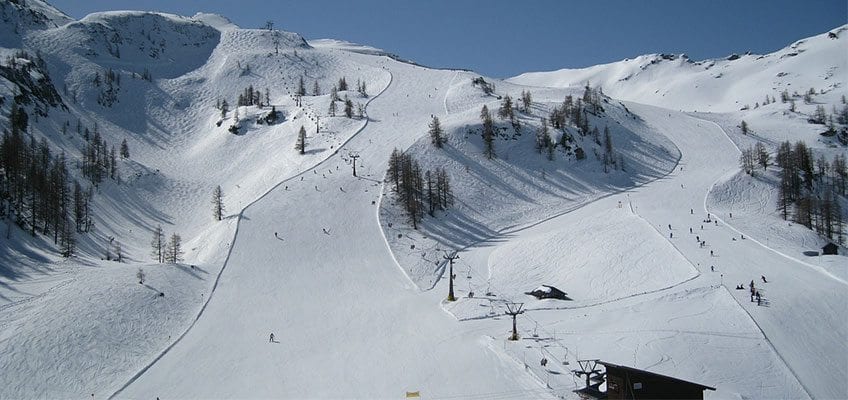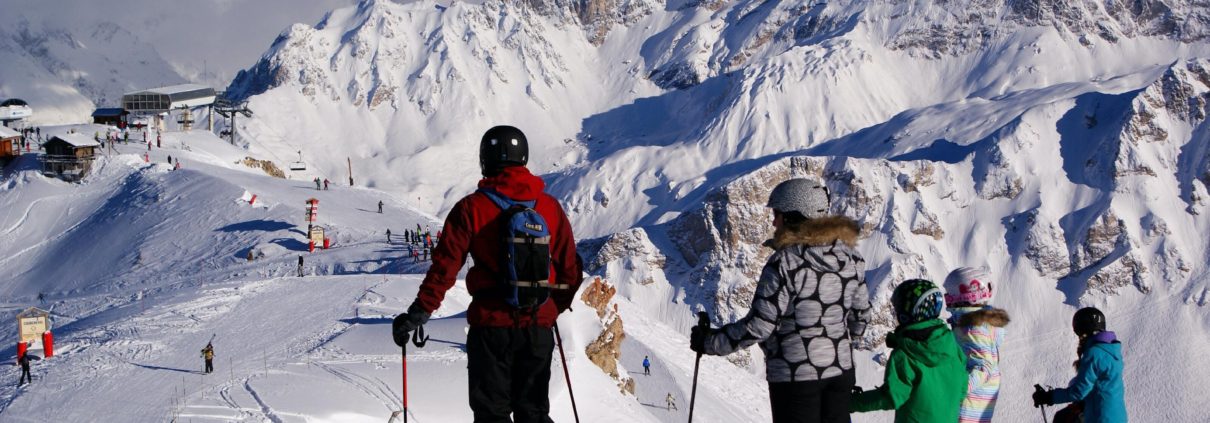Different Types of Skiing

Attribution: Title: Ski Run | Author: Cocoparisienne | Licence: CC0 Public Domain
Skiing has evolved a great deal over the years into many different disciplines
The invention of advanced skiing equipment’s has led to different types and styles of skiing. Currently the various skiing techniques are all regulated by the International Ski Federation (IFS) and every year different organisations arranges numerous events.
Skiing can vary from recreational skiing to backcountry challenges which is accompanied by different terrain types ranging from flat, country trails to steep slopes.
Courchevel’s ski scene began over 100 years ago, with the sport gaining in popularity and visiting Saint Bon, just below Courchevel Le Praz. The first ski lift was installed in Courchevel in 1945 and since then the sport has put Courchevel on the map – it is now one of the world’s most famous ski resorts and is linked to the largest ski area in the World, the Three Valleys.
Cross Country Skiing
Cross country skiing or Nordic skiing was practiced when modes of transportation was limited. For cross country skiing, chair lifts are not required and the skier’s heel is not attached to the boot binding unlike other skiing techniques. This type of skiing can be divided into two categories namely the classic style and the skating style.
The classic style of cross country skiing involves gliding and straight ahead movements whereas the skating style involves the V shaped glide which is similar to the movements used in ice skating and roller skating.
- Ski Magic guests can try cross country skiing in Courchevel Le Praz.
Alpine Skiing
Alpine or Downhill skiing involves going downhill as its name implies, although there are various disciplines. Alpine ski boots are higher and heavier compared to the cross country ski boots, and the poles used for alpine skiing are shorter and the skis are wider.
This is the kind of skiing that most holidaymakers do when on a ‘ski holiday’ because the lifts in the ski resorts make it easy for people to get up the hill in order to enjoy skiing down! See the Courchevel piste map here.
Ski racing disciplines seen at Alpine Ski competitions such as the World Ski Championships which came to Courchevel in 2023 include:
SLALOM
Highly technical with a short route with many gates close together. Skiers must be explosive, and race on two runs on different courses.
DOWNHILL
Downhill skiing is also technical with top speeds up to 140km/h.
SUPER-G
This test of speed sits between downhill and giant. Speeds can exceed 100km/h.
GIANT SLALOM
Technical and physical precision is required for the giant slalom in which gates are further apart than the usual slalom.
COMBINED
Two rounds in different disciplines: speed and slalom. Versatility is key!
PARALLEL
Two skiers race down two identical routes at the same time, with the first going through to the next round, against a different skier.
Off piste, Backcountry Skiing and Ski Touring in Courchevel
Backcountry or off piste skiing is for experienced skiers who don’t stay on the marked runs or “pistes” to ski down, which means they are skiing ‘off piste’ often in powder snow, which hasn’t been compacted. You can access this powder snow using lifts, or you could try ski touring.
What’s ski touring? Well you’ll need some different equipment to try this, which can be hired in resort. You have special boots and bindings which allow your heel to be free to walk up. You will also need skins – pieces of furry fabric which slide forward under the ski as you pull the ski up the slope, but the furs stop you sliding back down and grip the snow to help you walk.
If you try this type of skiing, be prepared to walk or hike up to find good routes, and always wear avalanche kit: a transceiver, probe and shovel.
There are some areas of the Three Valleys which are great for off piste skiing, backcountry or ski touring.
- We recommend exploring off piste in Courchevel with a mountain guide or ski school.
Freestyle Skiing in the Three Valleys
Freestyle skiing involves several types of jumps and tricks which include Mogul skiing, Aerial Skiing and Halfpipe. This type of skiing is always performed on manmade terrain parks.
Mogul Skiing– Skiers perform tricks over large mounds of packed snow, controlling their speed in order to perform. Known to be hard on the knees!
Aerial Skiing– Skiers descend a steep hill without poles and perform back and front flips, spins and twists over the jump on a special ski called the twin tip to help them move forwards and backwards.
Halfpipe– Skiers drop in and out of semi-circle scoops in the hills and perform various jumps and stunts in mid-air. This type of skiing was approved and included in the 2014 Olympic Games hosted by Russia by the International Olympic Committee and is always a showstopper.
- Try the half pipe in Meribel and read more about the 3 Valleys Snowparks.
Ski Cross – Four skiers leave the departure gate together and race down a track which includes steep hairpins, rollers and banks. A great spectator sport, thrills and spills are commonplace with skiers trying to get ahead of their competitors to win.
Slopestyle – Judges are looking for creativity, style and degree of difficulty for the tricks the skier pulls as they ski down their run.
Telemark Skiing
Telemark skiing is a mixture of cross country and alpine skiing. Skiers slide down on a downhill slope but like cross country skiing, the heel is not attached to the boot binding. The movement involved in telemark skiing appear like a series of lunges travelling down the slope.
Telemark skiing was made popular by Norwegian born Sondre Norheim in 1868. The skis used for this type of skiing are similar to alpine skis with leather ski boots and three pin binding. In certain cases cable binding and hinged plate binding can be used.
Free the heel, free the mind! If you fancy trying telemark skiing, let us know and we will find you an instructor or ski school.


Leave a Reply
Want to join the discussion?Feel free to contribute!